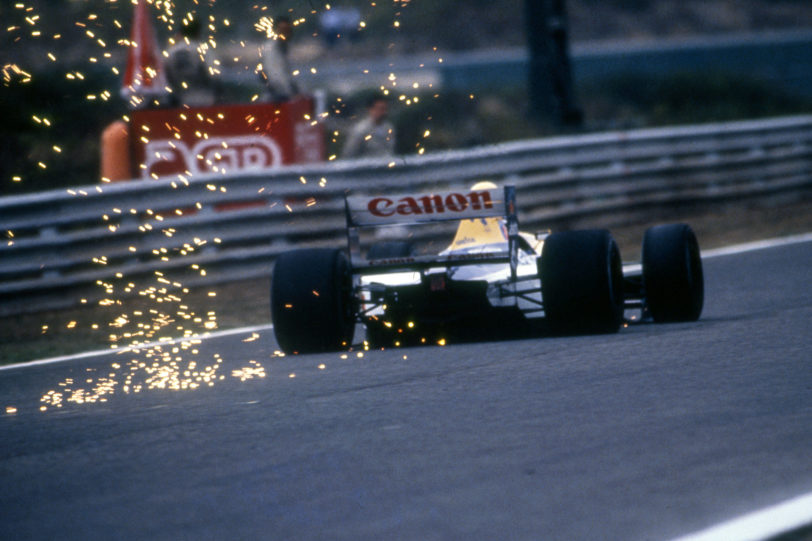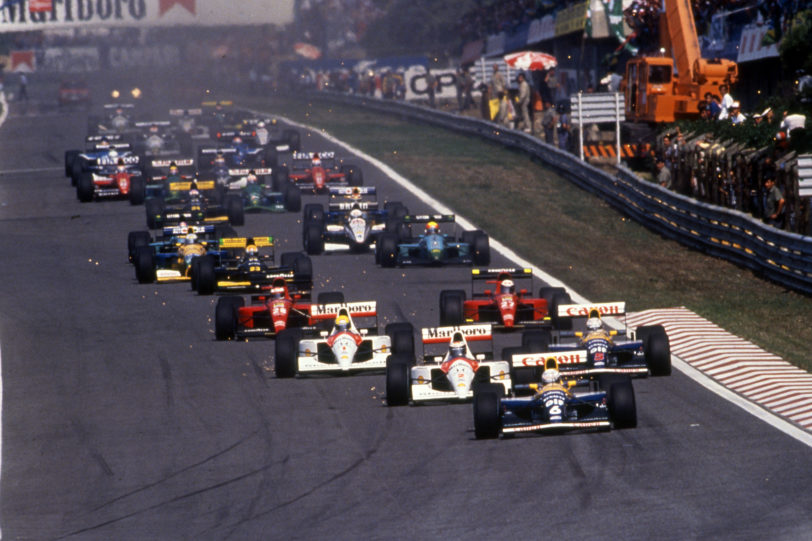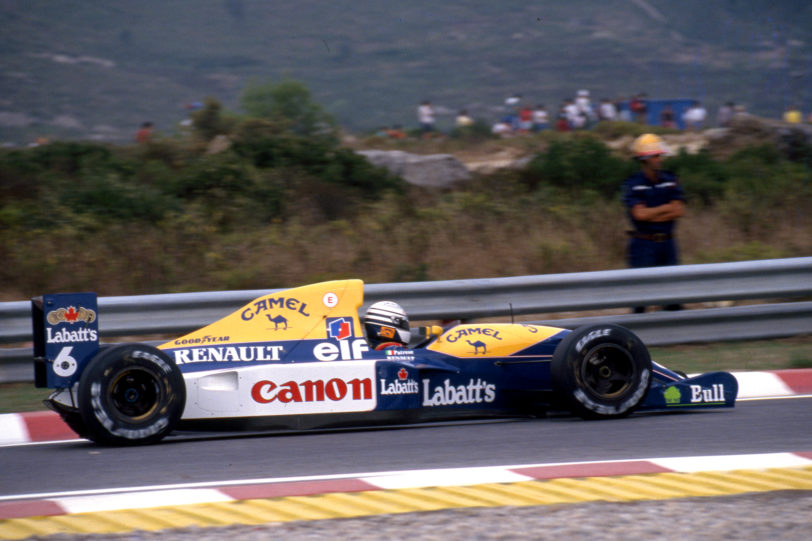The Williams FW14: F1’s Most Technically Advanced Car
The Williams FW14 was a car that Williams F1 used to race during the 1991 and 1992 seasons. The car was designed by the most successful engineer in Formula One history, Adrian Newey. The Williams FW14B and the subsequent Williams FW15C were considered as “the most successful technologically advanced cars that will ever race in Formula One”.
Adrian Newey and the Williams FW14
Adrian Newey was, and still is, an innovative automobile engineer. He could take a car and improve its aerodynamics and other parts while using the same engine. It is for this reason that he has won ten Constructors’ Championship titles, more than any other designer. He is the only engineer to win the title with three different Formula One teams (Williams, McLaren, and Red Bull racing). Six different drivers have won the Driver’s Championship driving cars designed by Newey.
In 1989 Williams started using Renault engines. The 1989 and 1990 seasons proved quite successful and competitive for Williams. But both Williams and Renault felt that their car had underperformed. That dissatisfaction brought about the need to improve on the performance of their car. Williams, with a superior budget, signed a contract with Adrian Newey who was working for March Racing Team.
Newey, along with Patrick Head immediately started making changes to the car to make it more aerodynamic and thereby improve its performance. The car was powered by a 3.5-litre V10 Renault engine. Semi-automatic transmission, and active transmission and traction control made it among the most sophisticated cars of the times. For a short time, the car also had anti-lock brakes.
Williams FW14 had the Ferrari F92A, McLaren MP4/7A and Lotus 107 as its closest competitors. But with Newey’s newly designed aerodynamics, the performance of the Williams FW14B far exceeded that of its closest competitors. Although the Willams FW15C was ready mid-season in 1992, the Williams FW14B was so successful that it was not used.
Williams FW14
The Williams FW14 first competed in the 1991 FORMULA 1 season at the inaugural race of the season, the 1991 United States Grand Prix. Nigel Mansell had changed his mind about retiring and joined Williams from Ferrari with Ricardo Patrese as his partner. While Mansel retired in the first three Grand Prix due to technical reasons, Patrese retired once. Patrese did finish second in the 1991 Brazilian Grand Prix.
After that, both the drivers bounced back strongly to take seven wins between them. Williams-Renault finished second in both the Constructors’ and the Drivers’ Championships. McLaren-Honda had beaten them to both the titles. Ayrton Senna and Gerhard Berger driving for McLaren had won nine Grands Prix between them. Williams had built a total of five chassis in 1991.
Williams FW14B
Further changes were made to the Williams FW14 in 1992 before the start of the season. The traction control, gearbox and active suspension systems were modified. What was unveiled, was the most technologically sophisticated car to ever race in Formula One. The car suited Mansell’s aggressive style of driving perfectly and he ran away with wins in the first five Grands Prix of the season.
Patrese, on the other hand, was not comfortable with the active suspension and preferred the old passive suspension. He also did not like the higher downforce of the car which Mansell relished. Patrese did win the 1992 Japanese Grand Prix towards the end of the season. Mansell scored a record nine wins during the season winning the Drivers’ Championship and securing the Constructors’ title for Williams-Renault.
The most visible difference between the Williams FW14 and the Williams FW14B was the humps on the front pushrods. These bulbous protrusions housed the active suspension technology. Featuring a longer nose, the car was unveiled at the last race of the previous season, the 1991 Australian Grand Prix. But Nigel Mansell insisted on using the older Williams FW14.
The key difference between the FW14 and this FW14B was the active suspension. Patrick Head revealed the system was essentially an evolution of a technology given to Williams by AP Racing: “We had been developing active suspension since 1985, which started by AP coming to us. They were developing a system for road vehicles, but they decided that they weren’t going to continue with it and rather bury it. They contacted us as we were using AP brakes at the time”.
Although Mansell retired in four of the races in the 1992 seasons, he finished second in the two races he did not win outright. The car was so good that Mansell and Patrese would gain a couple of seconds a lap against their competitors. During qualifying for the British Grand Prix, Mansell was two seconds faster than Patrese who in turn was a second faster than Senna in a Honda-McLaren.
Although Williams won The Drivers’ Championship one-two in 1992 and won the Constructors Championship by a clear 65 points, the season ended with both Mansell and Patrese leaving Williams. While Mansell left Williams because the team signed Alain Prost, Patrese moved over to Benneton.
The FW14 and FW14B won a total of 17 Grands Prix, earned 21 pole positions and scored a total of 289 points between them. Today’s Formula One regulations ban many of the technologies used in FW14B and FW15C. But these two editions of Williams cars are considered among the most technologically advanced cars to have ever raced in Formula One.
In 2017, the Williams FI Team celebrated forty years of racing in Formula One at Silverstone. Karun Chandok drove several laps in the Williams FW14B. Thereafter the 2014 Williams FW36 driven by Paul di Resta and the FW14B performed for three laps to the delight of the crowd and the press. Six chassis of FW14B were numbered as a follow up to FW14 from 6 to 11.
Chassis number FW14/8 was sold for £2,703,000.00 at an auction conducted by Bonhams and held at the Goodwood Festival of Speed. In 2020 it was revealed that Sebastian Vettel bought the chassis numbered five car driven by Nigel Mansell.


